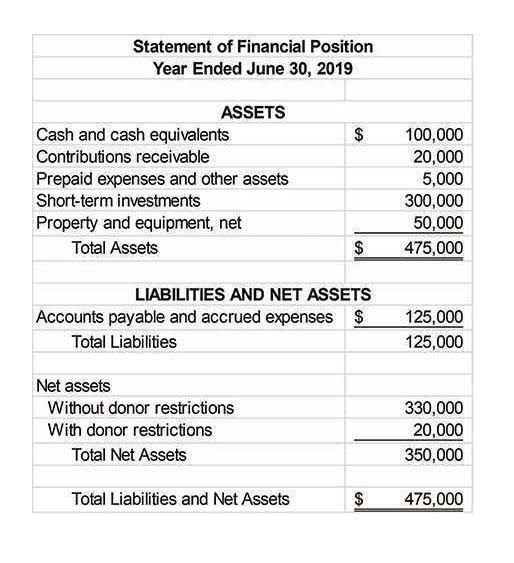As you move through the retail accounting cycle, there are three financial statements you’ll want to look at — income statement, balance sheet, and cash flow statement. These financial statements provide crucial information that will help you make important business decisions. The term ‘retail accounting’ what is retail accounting can be confusing because this process has little to do with actual business accounting. Retail accounting (or retail inventory) refers to inventory cost calculations. In simple terms, retail accounting helps you to track the value of items you have in stock based on product price and the number of sales.
- Customers are more likely to purchase the products they see first, but it is still only an estimate.
- Of course, this gets more complicated when there is more than one type of item with different prices.
- The primary advantage of the retail method is the ease of the calculation.
- As a result, the LIFO method isn’t acceptable in countries that follow International Financial Reporting Standards (IFRS) and may eventually become forbidden in the United States.
- Retail accounting software can provide a comprehensive account inventory at the item’s retail price in order to detect losses, damages and theft of stock.
- For tax purposes, you want to use the inventory costing method which will give you the most accurate inventory valuation.
Cash Flow Statement:

This method helps businesses keep track of every item in their inventory without grouping them. Of all the inventory costing methods, LIFO is beneficial if the front of the store or the first products on shelves holds the most recently purchased inventory. You can complete vital financial records like income statements, balance sheets, and cash flow statements with the aid of Wafeq, the best accounting software.
Digitizing Customer Experience: Step-by-Step Guide for Business Success
- On the other side, you list your liabilities, such as business credit cards.
- Of all the inventory costing methods, LIFO is beneficial if the front of the store or the first products on shelves holds the most recently purchased inventory.
- In this article, we discuss what retail accounting is and how businesses manage their inventory.
- Working with accounting software and a POS system will streamline the process and assist with the chosen costing method, maintain accurate records, and procure financial statements.
- Your bakery receives a shipment of 100 cupcakes on Monday and another shipment of 100 on Wednesday.
That’s a bonus for retailers, who might be worried about having to pay staff to do stock checks while keeping the doors closed. In fact, calling it retail accounting makes it sound as if there is a special discipline of accounting, especially for retailers. While retail accounting isn’t a separate discipline of accounting, the difference is that there’s a greater focus on inventory, which we’ll explain in this guide.
- Cost accounting is useful for making internal business decisions that improve a company’s production process, especially for larger businesses with more expenses.
- Retailers will inevitably have a physical count at the end of the year.
- It’s a simpler way to track inventory allowing you to get an estimate of your inventory costs.
- For example, if the beginning inventory was worth $1,000 and the business purchased $2,000 more, you need to track the total cost of $3,000.
- This way you can make your replenishment flow streamlined and improve customer experience.
What Is Retail Accounting? Retail Method + Calculator
Finally, you have what you need to calculate the cost of your ending inventory without taking a physical count. It equals the cost of your beginning inventory plus the cost of your purchases minus your cost of goods sold. To calculate ending inventory on March 31 using the retail value method, add the cost of your beginning inventory and purchases during the period to get the total available for sale. In this case, that would be $10,000 plus $2,500, which equals $12,500.
Inventory Management
For example, your business buys water bottles for $10 each and sells them for $25. As you can imagine, the cost of your inventory has a significant impact on your business’s profitability. This makes effectively managing it critical to the success of your retail business. We believe everyone should be able to make financial decisions with confidence. Whether through the use of cash basis accounting or accrual accounting, all transactions going in and out of the business accounts need to be accounted for appropriately.
The difference is multiplied by the cost-to-retail ratio (or the percentage by which goods are marked up from their wholesale purchase price to their retail sales price). The retail method of valuing inventory only provides an approximation of inventory value since some items in a retail store will most likely have been shoplifted, broken, or misplaced. It’s important for retail stores to perform a physical inventory valuation periodically to ensure the accuracy of inventory estimates as a way to support the retail method of valuing inventory. Although cost accounting method can provide better accuracy, it usually requires more complex calculations. The main advantage of retail accounting is how easily it sets inventory prices to match what customers pay. However, cost accounting can be challenging because it involves many factors that store owners can’t control.

- Before selecting a CPA, confirm that they specialize in retail accounting services.
- A major drawback of this method is that, because you don’t have a POS system tracking your sales, you don’t have a way to determine what items were sold, stolen or broken.
- For example, your business purchased 50 bags of chips for $1 each, then at a later date, decided to buy 30 more, but the price rose to $2 each.
- “The advantage is that it’s very easy to calculate and doesn’t require sophisticated tracking of how much someone paid for each SKU they purchased from a supplier,” says Abir.
- The first-in-first-out (FIFO) method is a common cost-flow assumption among retailers with perishable goods.
- FIFO method, when calculating the cost to acquire, considers that from all the batches you purchased for a given period, you’ll sell items from the oldest one.
Seek out additional resources, consult with professionals when needed, and never stop refining your understanding. By embracing the power of retail accounting, you unlock the key to unlocking the full potential of your business and achieving lasting success. By consistently calculating and monitoring your COGS, you gain valuable insights into your business’s efficiency and profitability. This empowers you to make informed decisions about your pricing strategy, inventory management, and overall financial health.